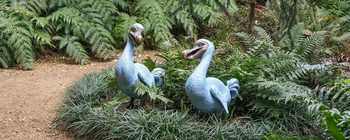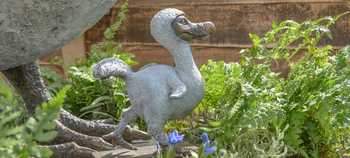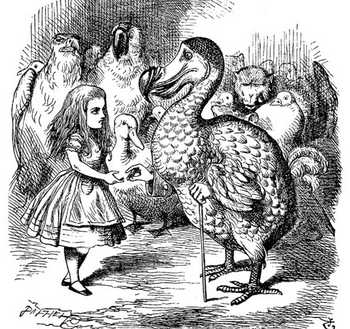The Dodo and Mauritius
The plump, whimsical, famously extinct bird from Lewis Carroll’s 1865 classic novel
"The Dodo never had a chance. He seems to have been invented for the sole purpose of becoming extinct!"
Willy Cuppy, 19th-century American humourist
Of all the many Earth-dwelling species that have become extinct since the dawn of time—nearly 4 billion by some scientific estimates—few have evoked more curiosity than the slow-witted, flightless dodo.
Having waddled these lands for a mere heartbeat in the grand cosmic scheme of things, the departed bird captured the imagination of naturalists, authors—and, to its eventual downfall, a great ravenous wave of European travellers.
Indeed, since shuffling off this spinning globe, the dodo has earned a permanent place in popular culture as a curious natural relic from the ancient world. A prehistoric bird that no human eyes will ever see again.
Lonely island
The dodo was a wholly unique bird found only in the Mascarene islands of Mauritius, Rodriguez, and Reunion in the Indian Ocean. Unfortunately for the dodo and its sheer lack of survival instincts, these islands were extremely remote. Its closest land neighbour was Madagascar, which lies nearly 900 kilometers to the West, separated by a stretch of Indian Ocean more than 3,500 kilometers deep.
With no natural predators to speak of, the dodo was very much left to fend for itself in tropical paradise. Until, catastrophically for the species, it was spotted by early European sailors who had voyaged to Mauritius in search of new lands. Dodo families were found in tremendous numbers, with their sizable thick-set frames reminding the island visitors of ostrich and cranes.
It was never going to end well once the sailors arrived. The dodo was slow, tragically dim, and couldn’t fly. Combine this with their entirely misplaced bravery, having been sat at the top of the island food chain for centuries—the poor dodos were easy pickings for the new arrivals, often waddling up to the sailors and hopping cheerfully into their nets.

How to spot a dodo
Dodos were large birds—roughly three-feet tall and weighing up to 20 kilograms, with downy grey feathers and a white plume for a tail. The dodo had tiny wings and an equally small sternum; a disastrous biological cocktail that made flight impossible.
Dodos had a distinctive beak; heavy, curved, and most likely the dodo's only real defense mechanism, capable of delivering a painful bite to anyone in nipping distance.
The end of the dodo
It’s hard to determine exactly when the dodo died out completely, but it seems likely that all traces of them had disappeared by the end of the 17th century. Until recently, the last confirmed dodo sighting on the island of Mauritius was made in 1662, but a 2003 study by David Roberts and Andrew Solow suggests that the dodo might have been extinct as late as 1690.
The dodo's downfall can be attributed to a complex mixture of changing ecosystems and the arrival of the new ruthless predators to the island. Some were killed by sailors looking to change their diet; others by rats, cats, pigs, and monkeys that travellers had shipped over. It’s also possible that the dodos starved due to the invaders clearing the fruit-rich forest. A perfect storm of evolutionary misfortune.

The stuff of myth and legend
From the years after their extinction, right up until the 19th century, dodos were considered by most scientists to be the stuff of legend. A mythical creature, a hoax, even—just as real as sleepy gryphons, goblins, and unicorns. With no concrete evidence to prove their existence, the dodos appeared to be little more than the product of an enthusiastic imagination.
It was only until the early 19th century, when European naturalists started to see dodos and dodo chicks exhibited across various museum collections, that the animal began to be recognized as a real, albeit extinct, creature.
Lewis Carroll and the dodo
Thanks to its ubiquitous presence in popular culture, the dodo bird is well-known to the majority of us; universally described as plump, cuddly, whimsical, and famous for its professed stupidity. Even before its appearance in Lewis Carroll’s 1865 classic Alice's Adventures in Wonderland, tales of the prehistoric avian were popular bedtime reading.
In the Wonderland series, the Dodo is believed to be a satirized portrait of the author himself. According to pop culture folklore, Carroll, whose real name was Charles Lutwidge Dodgson, saw the dodo as his spirit animal due to his alleged stutter, which often caused him to introduce himself as Do-do-dodgson. Carroll was also a regular patron of the Oxford Museum of Natural History, which served as a source of inspiration for many of his memorable anthropomorphic characters in the Wonderland books. Through the pages of Lewis Carrol’s masterworks, this mysterious, extraordinary bird will never be forgotten…

Posted on April 4th 2022
